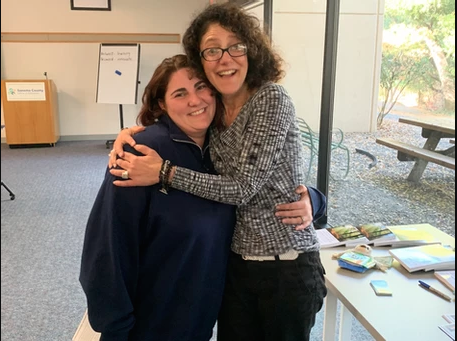Whole Brain Parenting
Do your kids get under your skin with crying, whining, pestering or throwing tantrums? Do you long for simpler days when you were single and kid-free? You are not alone.
Every person has a built-in self-care mechanism that we have explored since we were infants. As babies, we cried to express our needs. It is important that not only we meet our children’s needs, but also that our needs were met as children. As a simple example, when a baby cries, do you respond with something like, “Oh, sweetie, are you hungry? Let me get you something right now.” Or do you say something like, “Geez, you’re hungry again! How many meals do you need? This is not a restaurant.”
Crying, whining, pestering and throwing tantrums are all directly related to our innate self-care mechanism.
The three states of our innate self-care mechanism:
-
Neutral, where we are awake and responding to daily living.
-
Longings, where we are longing for people, events or things.
-
Discontents, where the people, events or things are present but not serving as desired.
Hunger is an example of how we can easily move from neutral to longing to discontent.
We start off in neutral – not hungry. As the day progresses, we begin to get hungry. We long for food. If this longing isn’t met, we become discontent because our needs are not met.
The human brain has a right and a left hemisphere.
The right side holds our emotions and memories. The left side holds our logic and language. When a person shifts from Neutral to Longing, they are in the left side thinking about being hungry and trying to figure out how to get something to eat. At a certain point, when needs are not met, they move from the state of Longing to the state of Discontent. This shifts into the right side of the brain. Recall, this is the emotional side. When enough (negative) emotion is present, the connection between sides is temporarily lost. This means when someone is having an emotional outburst, they cannot think clearly or access their words. This is when we say things like, “stop that screaming and say please!” This is the very worst thing we can do because the right side of the brain has to come back to Neutral before full language is restored. Our brains help us to communicate what state of self-care we are experiencing.
What is a better way to manage outbursts?
First, notice that your child is upset. Take a centering breath for yourself.
Second, calmly respond by acknowledging their feelings. Such as, “oh, babe, you sound so upset.”
This validates that they went from Neutral to Longing to Discontent. It has been a bit of a journey even though you may just be noticing.
Third, say “Honey, I’d like to help you. When you are done crying, tell me what you want.”
There is an appropriate level for this for every age. You wouldn’t tell a baby to get your own food, but a young child can be quite independent. The point is to not get sucked into the fact that they have negative emotions. Everyone does. But negative emotions aren’t bad; they are simply part of the state of Discontent. Kids rely on their parents to learn how to manage the state of Discontent.
The next time your child whines, try to remember their brain is telling you something really important. Don’t take the outside behavior as the communicator; it is simply their Discontent asking you for help.
Children who have suffered trauma tend to live in or more frequently go to the state of Discontent.
It is part of the fight or flight response in their autonomic nervous system. Imagine a small child trying to get water from a spigot. Every time they open it, they get blasted by an intense, cold spray, and never get any water to drink. Now, imagine the spigot is actually their parent. They ask for help and get a cold, intense spray: no soothing, no nurturing, and no quenching of thirst. Now, lucky for them, you are their parent. But even though you are kind and gentle, all they can remember is the cold, hard spray. They are expecting it and will even subconsciously attempt to create a cold, hard spray response to you.
This is where the real work is: in recognizing they are reacting to something that is not there, but is still quite real for them.
You have to stay slightly removed, yet present to help them. The deeper the trauma, the more anchored and prepared you need to be. Hold your child as perfect and whole in your mind, and treat the trauma with gentle kindness. The conversation you think you are having is different than the one you are actually having.
Here’s an example of the spigot illustration:
Child: “Waaaaaaahhhhhhhhhhh!”
Mom: (rushing in) “What is it? Are you ok?”
Child: “I hate you! You never help me! You are the worst mom ever!”
Analysis and response options:
#1 Mom: “Do not speak to me that way! You are on timeout!”
In this situation, Mom is reacting to her child’s State of Discontent as if he were behaving rationally and in Neutral or Longing.
#2 Mom: “Why are you yelling at me, Sweetheart? I’m trying to help you now.”
In this situation, Mom is still not recognizing that her child is in the state of Discontent. Discontent is a painful place where people go to after they have burned through Neutral and Longing.
#3 Mom: “Oh my darling, you are so upset. Have you been struggling all this time? Oh, angel, I am so sorry! I didn’t realize. There now, I will just sit here with you and when you are a bit calmer, you can tell me everything that happened.”
You as parent can even suggest a lollipop, a cup of juice or something sweet, which involves sucking to soothe the nervous system.
Once you see what is really happening i.e. they are in a Discontent state of being, and not being “manipulative, ungrateful or lazy,” you can get out of the way and be a calming force for them.
As the logical parent, who is aware of their child’s innate self-care mechanisms, you have the ability to deploy the left side of the brain and emotionally attune. In other words, you can recognize, understand and engage with your child’s emotional state even when they are in the midst of crying, whining, pestering or throwing tantrums. One of you will be the radio tower emitting the attuning station. The other will tune in. Be sure you are the tower. You cannot get sucked into their upset, which leads to more power struggles and exhaustion for a parent. They have to attune to you. To be the radio tower, you cannot get sucked into their upset. You can care and be supportive, but do not join them for your own sanity and for theirs. They are counting on you to be the stabilizing, anchored force in the relationship.
Nick Lawrence, MA is a parent trainer and the Sonoma county Instructional Manager & Lead Trainer for
Foster and Kinship Care Education Programs out of Santa Rosa Junior College and Runs Tools for Life. Nick has fostered numerous children and is an adoptive parent. A Family Resiliency Coach, an Emotional Freedom Technique Trainer, and a Therapeutic Intervention Trainer are a few other areas of his expertise.









